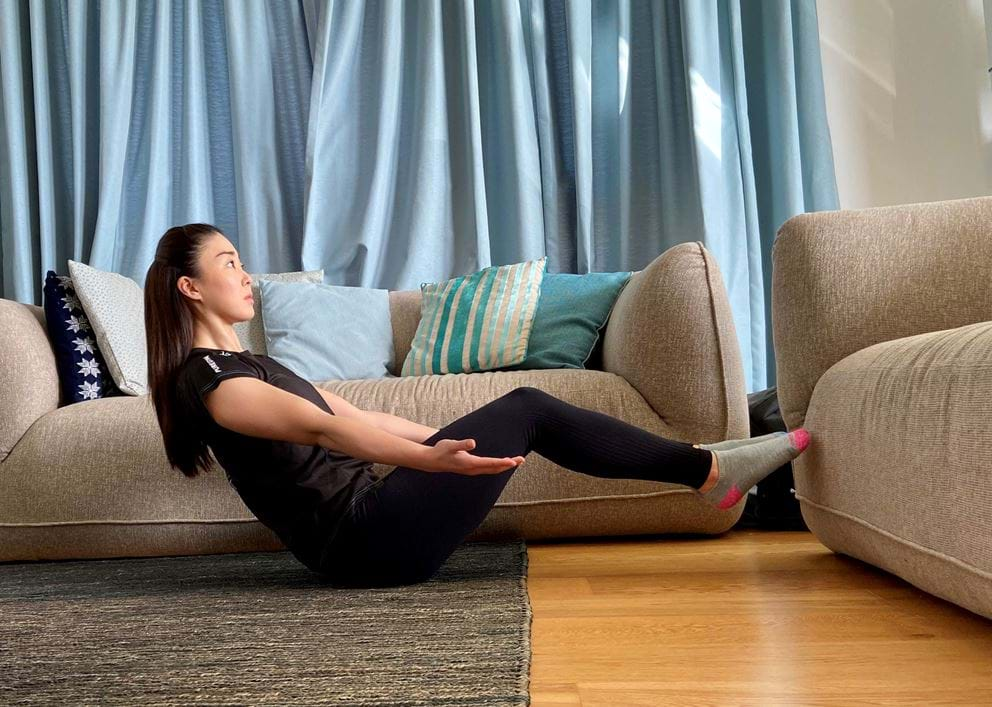How to workout and stay active at home

Is it possible to get a good workout in at home? Do I need to get equipment? How do I stay motivated to workout at home? Where do I start? We’ve got you covered! Here’s our guide to help you stay fit and active from home.
REMEMBER YOUR WHY
Knowing your ‘why’ is an important step in keeping sticking to a fitness routine. When motivation isn’t enough to help you make actions that will help you get towards your goals, having a clear purpose (knowing your ‘why’) can enable you to stay committed during any hurdles or barriers you might face when it comes to sticking to your home fitness routine. Try to define a clear purpose that is meaningful to you and if it helps, keep a note of it somewhere that’s visible to you, like on your phone screensaver, so you can keep this top of mind.
SET REALISTIC GOALS
Having a goal you can focus on and later be proud of will help steer the direction you take with your training. You might have to adjust or completely change what you were focusing on in the gym for the time being – and that’s okay. Write a list of some ideas of things you’d like really to achieve which you can realistically do within the confines of your home.
Some examples might be:
- learn to how to do a handstand
- improve my mobility so I can move and lift better
- workout at home 3 times a week
- do 10 minutes of stretching every morning
- set a personal best on the maximum number of press ups you can do in one minute
SCHEDULE IT IN
Once you’ve come up with a goal or however many goals you want to achieve, think about how these would realistically fit into your week and add them into your diary. Having a set number of days or specific time to work on these will help give you some structure to your new home routine. That way you have no excuse to forget about it!
MAKE A PLAN
Now that you have a good idea of the what, why and when, let’s look at how you can achieve the goals you set. Break your big goal into smaller ones and off the back of these, think of things you can action in the time you have allocated in your week. For example, if your goal is to stay active an maintain your current fitness by working out 3 times a week, what are your 3 workouts going to look like? Do you want to break it up into 3 full body HIIT workouts or would you prefer to do 1 weighted upper body session, 1 weighted lower body session and 1 cardio session? Tailor it in a way that suits your goals and needs.
SET UP A WORKOUT AREA
Much like your bedroom, living space and kitchen, where you carry out different activities, allocating a specific area in your home to workout in can help to create an environment which supports your activity/goals. Not everyone will have a room or garden where they can workout, so just do the best you can with the space you have. You may wish to move around some furniture to create some space. The great thing about home workout is, you don’t need much space or pieces of kit to be able to get a good workout in.
CREATE A WORKOUT PLAYLIST
Whilst it might seem like getting into a routine of working out at home is easier than going to the gym because you don’t have to travel – it can for many people be quite the opposite! Making a workout playlist with tunes you love can be the difference between you getting your trainers on and not getting a workout in. We've put a home workout playlist together with the most popular workout songs to help you stay active at home. Click here to listen to it on Spotify.
DO YOU NEED EQUIPMENT?
This will depend on your needs, goals and preferences. It’s possible to plan an effective home training plan using just your bodyweight so equipment might not be necessary. However, having equipment can of course provide benefits, particularly if you have been training for several years. Some pieces of home gym equipment that are practical, versatile and which don't take up a lot of space include resistance bands, dumbbells, yoga mat and a kettlebell.
If your aim is to build muscle or get stronger, remember to apply progressive overload as your body adapts to the training you are doing . Progressive overload in simple terms is making your workouts more challenging.
Ways in which you can apply progressive overload to your training include:
- increasing number of reps
- reducing rest time
- changing tempo
- adding a pause during the eccentric
- performing isometric exercises
- performing exercises with better form
- increasing load/resistance
- performing a unilateral version of the exercise
Make sure that you are providing enough training stimulus and rest for your body to adapt and build muscle.
We have a variety of free home workouts – go check them out here and give them a go! For more home workout ideas and ways to look after your wellbeing throughout this tips, click here.


